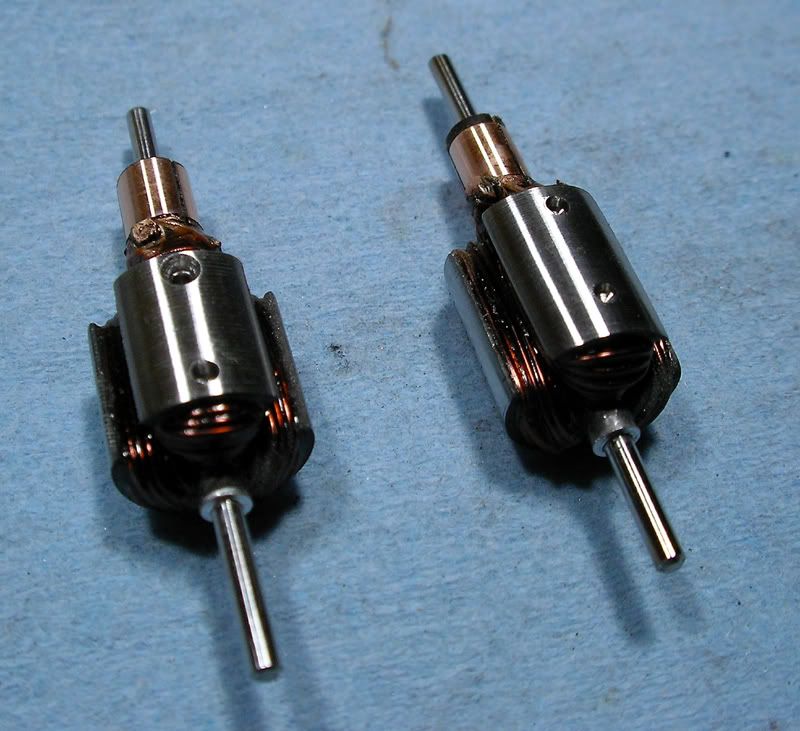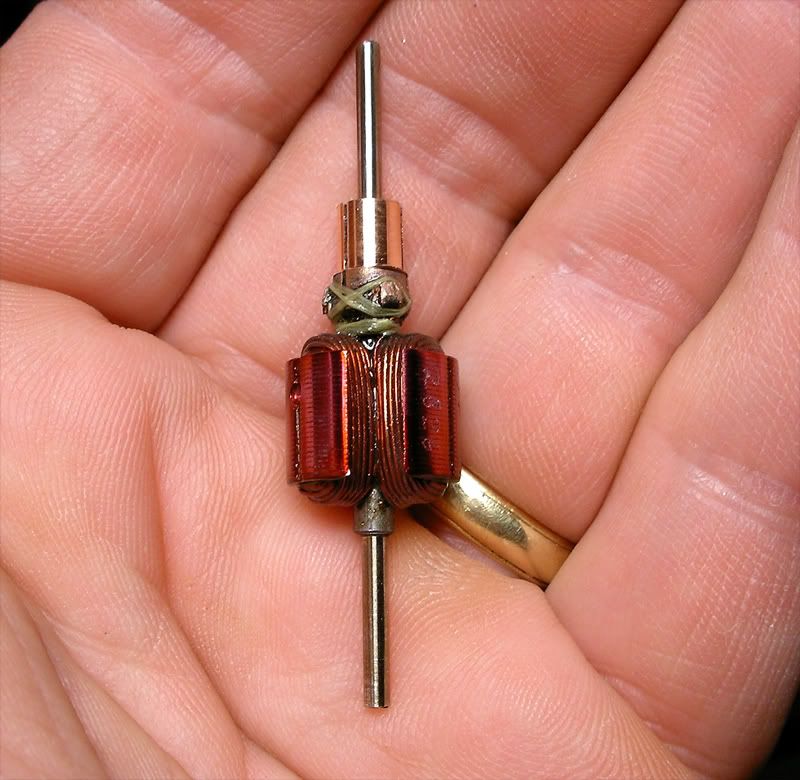I know someone who might have some old mura 15 & 20 arms. I'm in PA now, I'll give them a call on Monday.
Thank you Andrew! I've seen where people have a drawer full of the things and hope I can get them before they go to the recycling center

John, here's a question for you. Have you ever put a blank stack on your balancer to determine which pole might be the heaviest? I was reading an old Doug Henline rewinding article & in it he said he did it to determine which pole to wind first. 
Interesting?!! Does it make a difference which pole you start the windings?
Hi Bill (and Ernie), great question and thanks for proving to me that I'm not the only one who thinks about stuff like this...

yes. What I've found is that, if the shaft is straight, the arm blank will basically read to be in balance. This dovetails perfectly with what Rick (RGEO) told me a while back that much "imbalance" is really related to the shaft and also makes sense. The lams are stamped from metal of a uniform thickness and assembled randomely to form the stack. It would be surprising to find that the stack alone had an inherent imbalance. Take a stack and install it on a shaft that is slightly "out" though and bingo..."imbalance".
When people tell me stuff about winding, I never just accept it...I try and test it to either prove or disprove it for myself and Rick's excellent tip about balance has been seemingly proven to me time after time (that Rick knows his stuff!). It also doesn't matter what type of shaft is on there. Neither drill blanks or so-called "soft" shafts are necessarily straight, and either can be bent (also, either can be very straight and round). It's just that it's more difficult to bend drill blanks. It's also true that winding is imperfect and can cause imbalance and even epoxy, to a lesser extent can. Having said that, in the end it doesn't matter where the imbalance comes from, it's important to at least try and do something about it...hence my crude static balancing.
So back to your question Bill, if you look at an arm that has a lot of wire on it, the last pole wound can overlap the first pole a bit and even the way you attach the wire to the com tabs can be slightly "heavier" at the first/last tab (I try and avoid that even though the weight is teensy-weensy). That extra wire can mean a bit more weight (as well as more resistance on that pole, but that's another thing altogether), so it can help to offset that by not finishing on the "heavy" pole. So I often mark the heavy pole with a Sharpie beforehand. I also go through arms that I'm stripping after they're cleaned-up as well as new ones to look for bad shafts, or at least shafts that are bad enough to cause significant problems. I also got a small arbor press a while back to use instead of "C" clamps or a vise for installing shafts...cheap and MUCH more precise, making shaft-swapping a predictable job. I also keep a bunch of drill blanks on hand and even some .078" piano wire that's
pretty straight and round for some Mabuchi jobs. Fighting an out-of-true shaft or even trying to straighten one out is tedious as heck. Of course, I would think none of this is a big concern for motor manufacturers. They use good quality stock and have nailed down a sequence of steps for building arms that's efficient and also takes some of the human-error out of the equation.
Sorry for the long-winded reply.

-john




 This topic is locked
This topic is locked



















